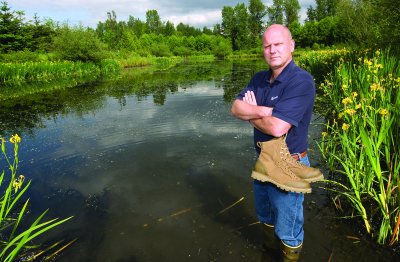 When Joseph Schneider was promoted to CEO of LaCrosse Footwear in August 2000, the shoe industry had changed, but LaCrosse, founded in Wisconsin in 1897 as a maker of rubber horseshoes, had not.
When Joseph Schneider was promoted to CEO of LaCrosse Footwear in August 2000, the shoe industry had changed, but LaCrosse, founded in Wisconsin in 1897 as a maker of rubber horseshoes, had not.
SOLE SOLUTIONS
| LACROSSE FOOTWEAR: lacrossefootwear.com MISSION: Maximizing the work and outdoor experience FOUNDED: 1897 2007 GROSS ANNUAL REVENUE: $118 million EMPLOYEES WORLDWIDE: 340
|
When Joseph Schneider was promoted to CEO of LaCrosse Footwear in August 2000, the shoe industry had changed, but LaCrosse, founded in Wisconsin in 1897 as a maker of rubber horseshoes, had not. The Portland-based outdoor and work boot maker was paying the price for failing to keep up with the market, losing millions between 1999 and 2002.
“When I took over, we were heavily in debt and had little accountability,” says Schneider. “I believe you cant emotional event. That emotional event took place when our bank said ‘we want out’ in September 2000. When a bank says ‘we want out,’ you’ve got to scramble to decide how to focus resources to survive.”
Wanting this company to survive was much more personal for Schneider than for most CEOs. His father, George, was chairman of the board for 23 years, and Schneider’s family owns half of the public company’s stock. (LaCrosse acquired Portland-based Danner Shoe Manufacturing Company in 1994, and went public the same year. It moved to Portland in 2001.) Schneider sliced about 100 jobs, moved 80% of the company’s manufacturing to China (keeping the rest at its Portland plant), and eliminated some products to focus on “niche sustainable markets.” With dozens of competitors such as Columbia, Wolverine, Timberland, Merrell, Ricky and Cabela’s at its heels, the company moved forward. In 2007, its gross revenue hit $118 million, steadily climbing back from a low of $89 million in 2003.
The domestic shoe industry is shrinking, but LaCrosse is bucking the trend. “We are a very small player,” says Schneider. “But our niche markets are growing.” Less than 10% of its business is international — with exports to Japan, Canada and Europe — but that area is growing at a faster rate than U.S. sales.
LaCrosse identified four areas where it believes demand for footwear will remain strong: transportation (such as railroad workers), energy (mining), law enforcement and the military. “You need to know exactly what the worker needs,” says Schneider. “You have to be the expert in the market from soup to nuts. With strategies, you tend to get about 80% right, then you have to be flexible.”
“There’s been a shift toward using commercially available products by the military,” says Schneider. “When the country went to war, most of the technology was based on Vietnam. But there have been huge changes since then. What the Army and Marines found out is that they could buy commercial products that would perform better.”
LaCrosse has won $3.5 million in orders from the Marines and the Army. The Army ordered the Danner Explorer, and the Marines ordered the Danner Marine Hot boot and the Mountain Cold Weather boot. The boots are made at the Portland plant, which employs 130 workers.
“This is not a glamorous white-shoe business,” says Schneider. “The main difference between us and the white shoe guys like Nike is that we can’t buy our way into it, we have to earn it. That Marine or coal miner has to have an unbelievable experience with our product.”
ROBIN DOUSSARD
To comment, email [email protected].

